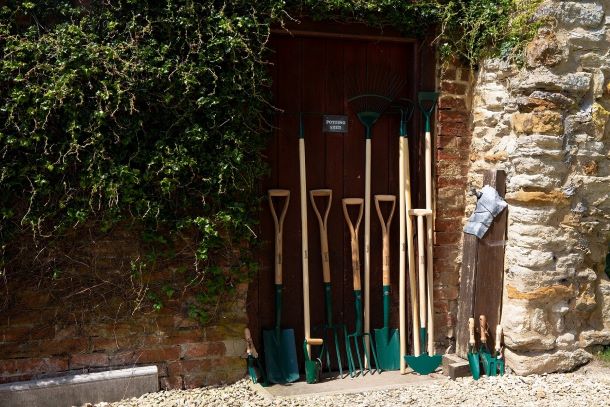The garden can provide a place of sanctuary during troubling times, giving us the space, fresh air and light that we so vitally need for our mental and physical health. As well as allowing us to escape from the worries of what the coming months may bring, it also provides us with a whole host of projects to get stuck into that we may not have previously had time for.
Whether you are looking to tackle a small task during your lunch break, or to entertain children whilst they are out of school, there are plenty of jobs to see you through the social distancing period.
As we get breaks in the wet weather, begin mowing your lawn on a regular basis. Keep the blades on a high setting for the first few cuts to help produce a greener, healthier lawn as the season develops. Once mowed, use a lawn edging knife to neaten up any small bumps in the edges and finish by trimming away any overhanging grass with a pair of edging shears. If you have a small lawn area, on the front garden for example, you may find that lawn shears are more effective than using a lawnmower.
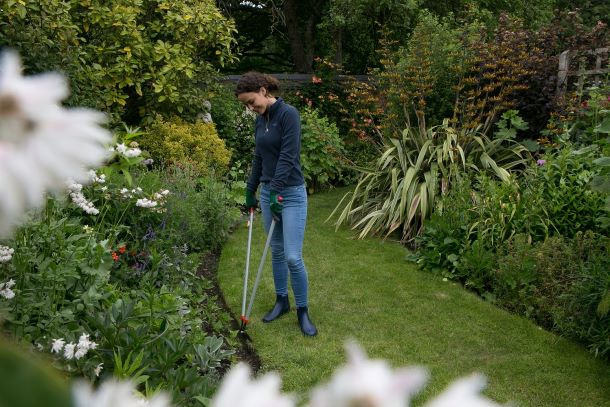
Early spring is the ideal time to prune rose bushes and shrubs, helping to encourage healthy shoots that will produce a beautiful display of flowers over the coming weeks and months. Begin by removing any dead or diseased wood using a pair of anvil pruners, then remove any shoots that may be crossing each other. Finally, prune the flowering wood to outward-facing buds, ensuring any dead heads are removed along the way.
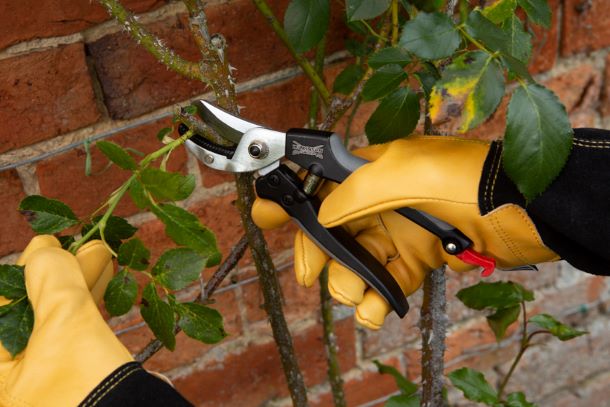
There is a sense of satisfaction that comes with clearing up any space, and your garden’s borders are no exception. Once the lawn edges have been neatened, tackle any weeds that have taken over flowerbeds during the winter. Wearing gloves, pull out any larger weeds, making sure that the roots aren’t left in the ground (a trowel can also help with this task). Any smaller weeds can then be removed quickly using a garden hoe, which slices through the root of the weed just below the surface of the soil.
Once the weeds have been cleared, mulch some compost into your soil to provide it with nutrients and prevent it from drying out during warmer spells. This will also suppress the growth of new weeds and give the soil a fresher and healthier look.
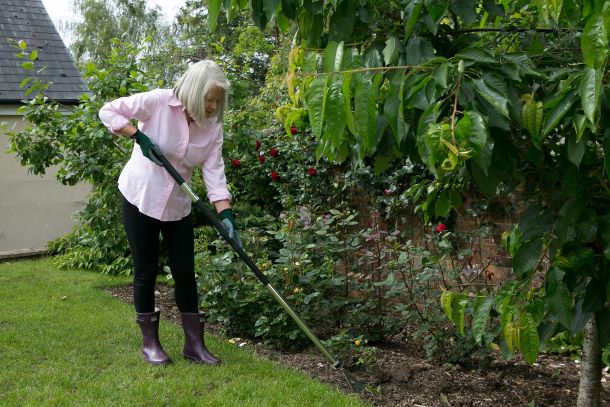
Your borders will now feel like a blank canvas, and you can now start planning out which plants you would like to grow. As a general rule, keep taller plants at the back and shorter ones at the front. This works effectively for aesthetics, but also means that all plants get their fair share of sunlight. If you have children off school during this period, let them help you decide on colour schemes as well as helping plant out your arrangements. Encourage them to revisit their handywork throughout the season, watering plants regularly and perhaps taking photos to keep track of how the plants have grown.
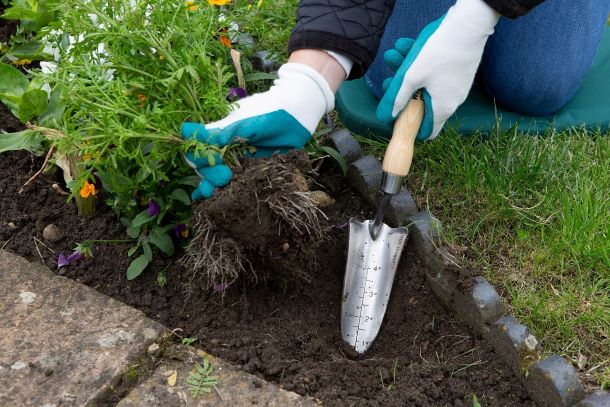
In addition to maintaining the greenery in your garden, some general cleaning and maintenance can help to give your outdoor space a new lease of life. Start a checklist of tasks to complete over the coming weeks. This could include: cleaning the greenhouse, organising the shed, cleaning and sharpening your garden tools, washing the patio, painting the garden fence and arranging solar lighting around your patios and pathways. Completing these whilst self-isolating will mean that when this difficult period is over, you can sit back in the sunshine and enjoy the results of your efforts.
